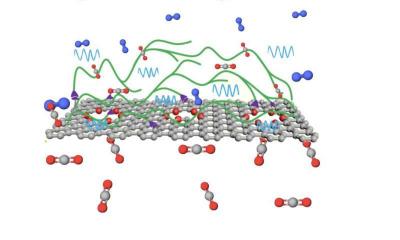A way to cut CO2 levels, produced from burning fossil fuels and released into the atmosphere, is through carbon capture, a chemical technique that removes CO2 from emissions ("postcombustion"). The captured CO2 can then be recycled or stored in gas or liquid form, a process known as sequestration. Carbon capture can be done using high-performance membranes, which are polymer filters that can specifically pick out CO2 from a mix of gases, such as those emitted from a factory's flue. These membranes are environmentally friendly, they don't generate waste, they can intensify chemical processes, and can be used in a decentralized fashion.

Now, scientists at Ecole Polytechnique Federale de Lausanne (EPFL) have developed a new class of high-performance membranes that exceed post-combustion capture targets by a significant margin. The membranes are based on single-layer graphene with a selective layer thinner than 20 nm, and have highly tunable chemistry, meaning that they can pave the way for next-generation high-performance membranes for several critical separations.